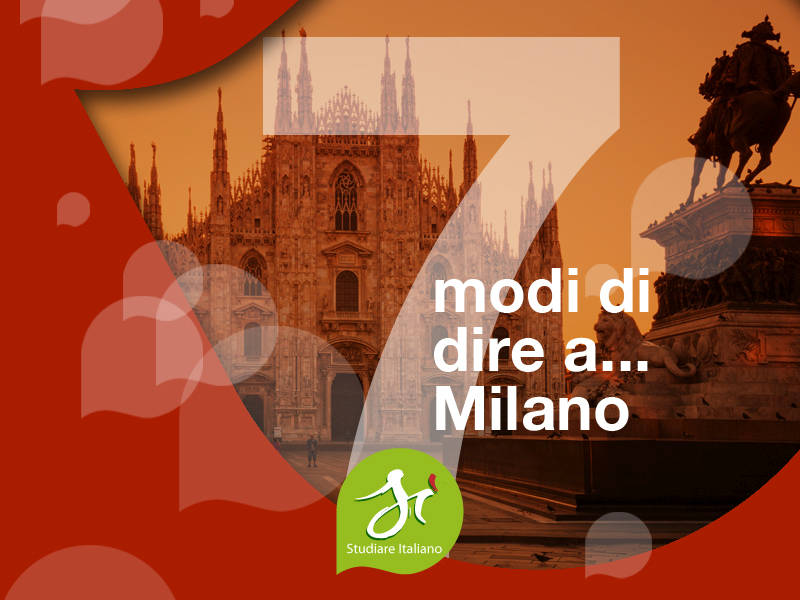This is where the new young face of Italy manifests itself. International and multicultural, tolerant and creative, Milan offers its inhabitants and newcomers an open and forward-looking atmosphere. Here one can find new inspiration and at the same time follow one’s interests: university studies, countless job opportunities, or more simply cultural interests. Milan, which in antiquity was for a time the capital of the Roman Empire and which Napoleon chose 1400 years later as the capital of his Italian empire, is firmly linked to a rich local historical and cultural tradition, creating a fantastic blend with the present. Not for nothing is the high Italian language traced back to the Milanese writer Alessandro Manzoni.
1 – THE HISTORIC CENTER
Let’s start with the center: The Duomo, the huge and magnificent cathedral in continuous development from the Middle Ages to the present day, is considered the symbol of the city. You can climb to its roof, dotted with countless delicate statues, and gaze at Milan’s skyline of spectacular residential and office towers, with the ring of the Alps shining majestically on the horizon.
2 – THE MADUNINA
This city under the “Madonnina,” the golden statue of the Virgin Mary atop the Duomo, is all to be discovered. Starting, for example, from our centrally located Italian language school we take our students on guided tours following routes that are not only touristy. Among the alleys of the historic artists’ quarter, Brera, or in newly built places such as Piazza Gae Aulenti and the skyscrapers of the “vertical forest.” Walks can take you to the mysterious early Christianity (Basilica of Sant’Ambrogio) or the colorful Renaissance (Church of San Maurizio), along the picturesque canals (“navigli”) in the old harbor district (“darsena”), with its many lively bars and meeting places.
3 – MUSIC
Milan is a city with music and for music. First and foremost, the flagship of Italian opera history and its stimulating and controversial productions: the Teatro alla Scala, also a symbol of the city. But there is also the Auditorium or Conservatory for classical music, pubs and wine cellars for jazz, the National Theater for musicals, discos, and clubs for pop. Not to mention the density of recording studios, unique in Italy, where the music of all genres is produced.
4 – LEONARDO
Leonardo certainly came from “Vinci,” from Tuscany. But here in Milan, he found ideal conditions to put into practice his many talents as an artist (the “Last Supper” in Santa Maria delle Grazie), as a scientist (Science Museum), as a technician (canal system), or as a court entertainer (Castello Sforzesco). In the city, its museums, institutions, and churches, one can trace other countless artistic traces of Italian art history and culture. They lead to Piero della Francesca as to Michelangelo, to Bramante as to Caravaggio, to de Chirico as to Fontana. And highlights are offered by contemporary art in the Prada Foundation or the Pirelli Hangar Bicocca, facilities that all of Italy envies Milan.
5 – FASHION
Fashion, of course. Is there a more elegant place in Italy than Milan? No, and you can already tell by observing the passers-by (always, or almost always, well-dressed) who crowd the streets. As well as the numerous stores that make the city a paradise not only for shopping but especially for discovering new styles, while the fashion world launches its messages with huge advertising posters. Then there are the international fashion weeks in spring and fall that lead to “sold out” hotels and restaurants.

6 – DESIGN
Design, the beautiful form, is certainly no less important than fashion. Small and large studios and workshops design and produce objects that beautify our daily lives. Their development can be followed in various museums (including the “Triennale”), and the latest products fill the windows of the relevant galleries. The Salone del mobile, held every year in April, has its traditional venue in the exhibition halls of the Rho fairgrounds. But not only that, the city streets in many districts (Tortona, Lambrate, Brera, among others) are also transformed into showrooms and creative workshops that attract visitors from all over the world every year.
7 – TRANSPORTATION SYSTEM
Milan is the city with the highest population density in Italy, after Naples. But an efficient public transportation system with well-organized subways, buses, and streetcars makes travel smooth and fast.
In the historic carriages of some streetcar lines (1, 5, 10, 19 or 33), which still date back to the 1920s, the daily streetcar ride, with light bulbs and teak doors, is transformed into a journey through time. The increasingly popular sharing of scooters, bicycles, or cars is very much in vogue. And the alternative is the “stroll,” the walk on foot.
8 – THE APERITIF AND MULTI-ETHNIC CUISINE
The tradition of the aperitivo derives entirely from local Milanese history. Aperol and Campari are children of the city. With aperitivo and the most varied types of snacks, countless street cafes and wine bars attract younger and less young people from early evening until late at night. Here anyone can converse with anyone, even if they have just started the beginner’s course.
Multiethnic Milan then offers an extraordinary range of international cuisines, from Asian to South American, African to regional Italian. This characteristic is reflected in a colorful scene like very few other places in the world: on every corner, you can find a restaurant that can satisfy your curiosity to try new or old flavors.
9 – FINANCIAL HEART OF ITALY
Not only entertainment. Milan would not be so vibrant and attractive if, as Italy’s financial metropolis and capital of creative industries, it could not count on a widely diversified labor market. The country’s most important technology companies are based here. Major events such as the 2015 Universal Exposition or the upcoming 2026 Winter Olympic Games are proof of the city’s organizational strength. Educational institutions and private or state universities ensure change and renewal. Students from all over Italy and abroad come here to graduate from renowned universities (Bocconi, Politecnico, etc.) or to attend famous Fashion schools (Marangoni, the Luxury Academy, etc.).
10 – NATURE AND SURROUNDINGS
Surprisingly, green spaces continue to open up between streets and buildings. Old parks (Sempione Park, Public Gardens) and new facilities (Library of Trees) offer natural spaces to relax even in the city center. The green policy is catching on in Milan as well. Still on the subject of green projects, Italy’s largest thermal park will be built in Milan in 2023, using the thermal waters already present in Milan’s subsoil and constituting one of the first green spas in Europe. For those who then want to get out of the urban environment in search of more nature, by train, bus or car one can quickly reach fabulous lakes, hills covered with vineyards, and of course the Alps, a mountainous landscape among the most beautiful in Europe.
Milan is located in the center of an important and magnificent territory¬-just as our school “Il Centro” is located in the center of an extraordinarily exciting and at the same time lovable city.

